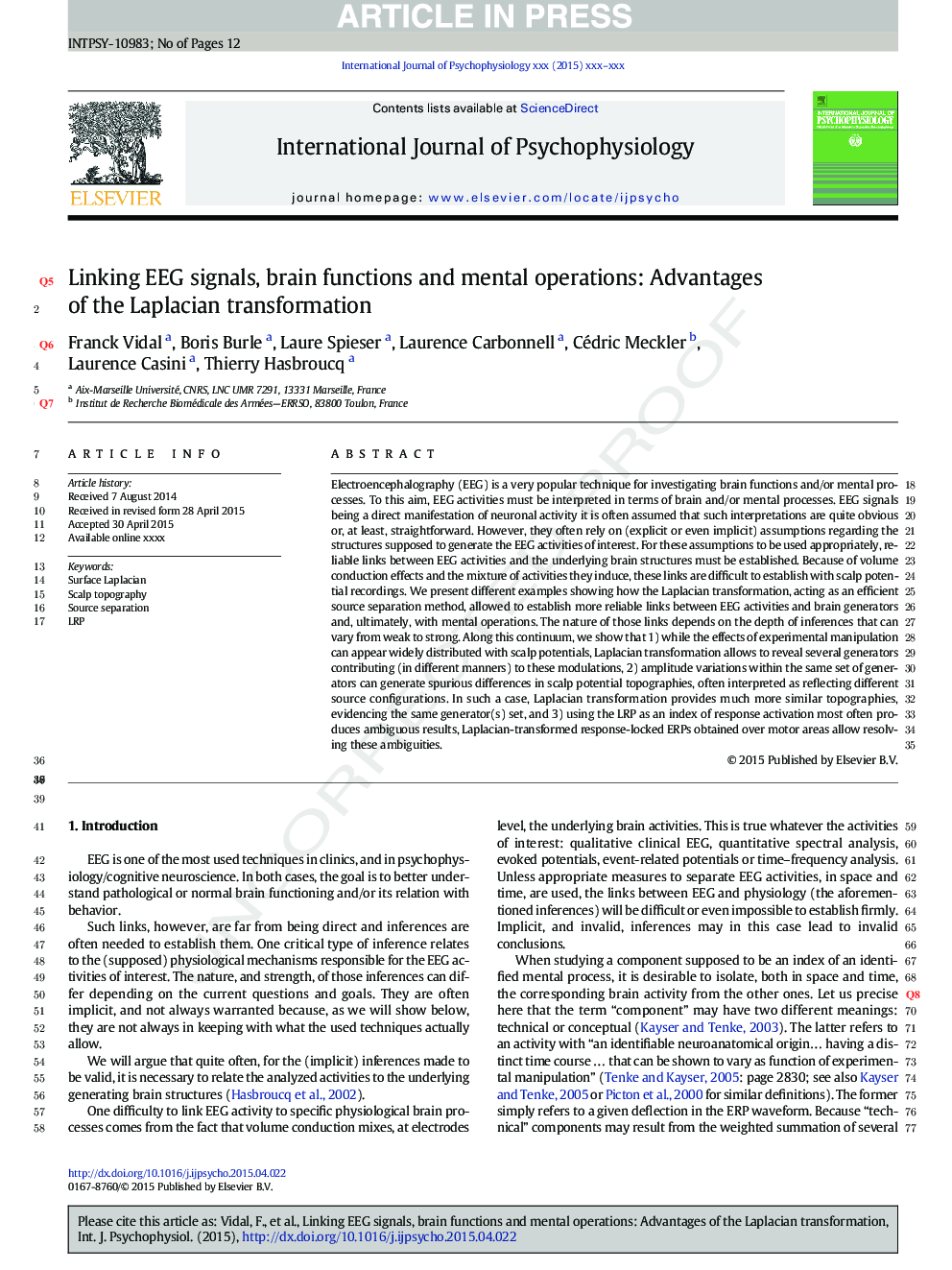| Article ID | Journal | Published Year | Pages | File Type |
|---|---|---|---|---|
| 7295316 | International Journal of Psychophysiology | 2015 | 12 Pages |
Abstract
Electroencephalography (EEG) is a very popular technique for investigating brain functions and/or mental processes. To this aim, EEG activities must be interpreted in terms of brain and/or mental processes. EEG signals being a direct manifestation of neuronal activity it is often assumed that such interpretations are quite obvious or, at least, straightforward. However, they often rely on (explicit or even implicit) assumptions regarding the structures supposed to generate the EEG activities of interest. For these assumptions to be used appropriately, reliable links between EEG activities and the underlying brain structures must be established. Because of volume conduction effects and the mixture of activities they induce, these links are difficult to establish with scalp potential recordings. We present different examples showing how the Laplacian transformation, acting as an efficient source separation method, allowed to establish more reliable links between EEG activities and brain generators and, ultimately, with mental operations. The nature of those links depends on the depth of inferences that can vary from weak to strong. Along this continuum, we show that 1) while the effects of experimental manipulation can appear widely distributed with scalp potentials, Laplacian transformation allows to reveal several generators contributing (in different manners) to these modulations, 2) amplitude variations within the same set of generators can generate spurious differences in scalp potential topographies, often interpreted as reflecting different source configurations. In such a case, Laplacian transformation provides much more similar topographies, evidencing the same generator(s) set, and 3) using the LRP as an index of response activation most often produces ambiguous results, Laplacian-transformed response-locked ERPs obtained over motor areas allow resolving these ambiguities.
Related Topics
Life Sciences
Neuroscience
Behavioral Neuroscience
Authors
Franck Vidal, Boris Burle, Laure Spieser, Laurence Carbonnell, Cédric Meckler, Laurence Casini, Thierry Hasbroucq,
